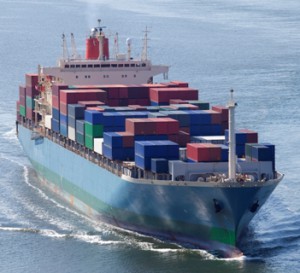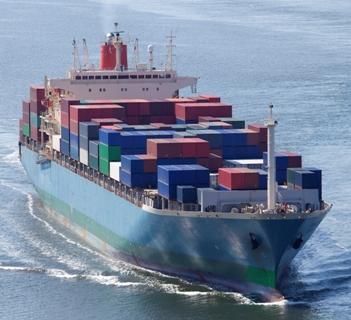 Oakland, CA– Container lines serving the Asia-U.S. trade lane reaffirmed their commitment to reversing 2011 and 2012 losses, and to raising the baseline for freight rates as they head into a new round of 2013-14 contract negotiations with customers.
Oakland, CA– Container lines serving the Asia-U.S. trade lane reaffirmed their commitment to reversing 2011 and 2012 losses, and to raising the baseline for freight rates as they head into a new round of 2013-14 contract negotiations with customers.
Member carriers in the Transpacific Stabilization Agreement (TSA) have adopted a set of guideline rate and ancillary charge adjustments that they intend to apply to all new and renewed service contracts, from all Asian origins, to take effect from mid-October going forward. This includes “early bid” contracts concluded in late 2012 and early 2013, as well as standard contracts which typically take effect on May 1, 2013.
TSA is recommending rate increases of US$800 per 40-foot container (FEU) to the U.S. West Coast; $1,000 per FEU via all-water to the U.S. East and Gulf Coasts; and $1,200 per FEU for intermodal shipments via all coasts.
Members also reiterated the need for full fuel cost recovery, including the bunker charge; the recently adopted low-sulfur component to address the higher cost of using cleaner-burning fuels within North America coastal zones; and a new, simplified intermodal fuel component – a single component for all inland destinations that will be incorporated into the bunker charge and will replace the current inland fuel surcharge, effective January 1, 2013.
TSA executive administrator Brian M. Conrad said container lines have faced a steep uphill climb throughout 2012 to reverse dramatic revenue losses as steeply discounted rates in key lane segments crept into 12-month contracts.
“The eastbound transpacific is a dynamic, highly competitive market,” Conrad explained. “Rates negotiated for one route or commodity too easily go viral, spreading to all routes and commodities. That may often be the nature of markets, but it does not necessarily mean those rates are anywhere near economically sustainable for lines carrying the cargo.”
Conrad said the proposed rate increases are badly needed because overall rate levels fell so far earlier in the year. He added that interim general rate increases taken during 2012 were each only partially applied as individual contract terms or negotiations with customers allowed. As a result the cumulative revenue effect, while helpful, was less than it appeared.
“TSA lines are mindful, going forward, of the need to avoid the rate erosion that typically occurs during the winter season, as contracts expire or open for renegotiation as their service commitments are met,” Conrad said. “It is critical that, between individual lines’ announced September rate initiatives and the TSA guideline adjustments, there will be a reasonably compensatory baseline in place for the coming contract year, beginning with early contracts coming up for renewal.” Average freight rates, according to TSA’s revenue index, remain at levels seen in early 2011 despite subsequent increases.
TSA members estimate that most new vessel capacity deployed in the transpacific trade during 2012-13 will be absorbed by a combination of steadily rising demand, slow-steaming and other factors. Independent analysts such as Alphaliner expect a sharp falloff in new vessel orders after 2013, particularly as lenders and investors rethink long-term capital commitments in an industry generating weak returns. That potentially leaves vessel space and equipment in short supply beginning in 2014-15.
At the same time, aggregate inland transport, equipment repositioning, cargo handling, feeder ship and maintenance and repair costs will rise by 8% over 2012-13, putting further economic pressure on carriers. These costs are likely to rise with the signing of new labor agreements in coming months.
Full recovery of fuel-related costs also remains a key issue for carriers, as bunker fuel prices remain near US$700 per metric ton; as demand has spiked for low-sulfur fuel, which commercial ships are now required to burn within 200-mile North American coastal zones; and recent diversion of East and Gulf Coast cargo due to labor uncertainty has increased intermodal costs. Beginning January 1, 2013, TSA carriers are recommending that fuel-related charges be consolidated under the bunker charge, for greater simplicity and improved collection. This will include conversion of the existing three-tier inland fuel surcharge into a single bunker component, effective January 1, 2013.
The ongoing combination of increased operating costs and only slight improvement in revenue, has taken a significant toll on container shipping lines. Average carrier operating margins have been negative since the beginning of 2011, bottoming at -12% in first quarter 2012. Of the top 17 transpacific lines, 11 have debt-to-cash ratios exceeding 6-to-1, and six have ratios exceeding 8-to-1.
“Carriers are potentially facing a kind of perfect storm next year, and heading into 2014,” Conrad explained. “Just as global markets see greater certainty and trade growth accelerates in a meaningful way carriers will be facing capacity shortages, weak balance sheets and tight credit. It looks increasingly likely that reinvestment will turn on a sustainable rate structure.”
TSA members include APL, CMA-CGM, COSCO Container Lines, China Shipping Container Lines, Evergreen Line, Hanjin Shipping, Hapag-Lloyd AG, Hyundai Merchant Marine, K Line, Maersk Line, Mediterranean Shipping Co, NYK Line, Orient Overseas Container Line, Yangming Marine Transport Corp and Zim Integrated Shipping.





